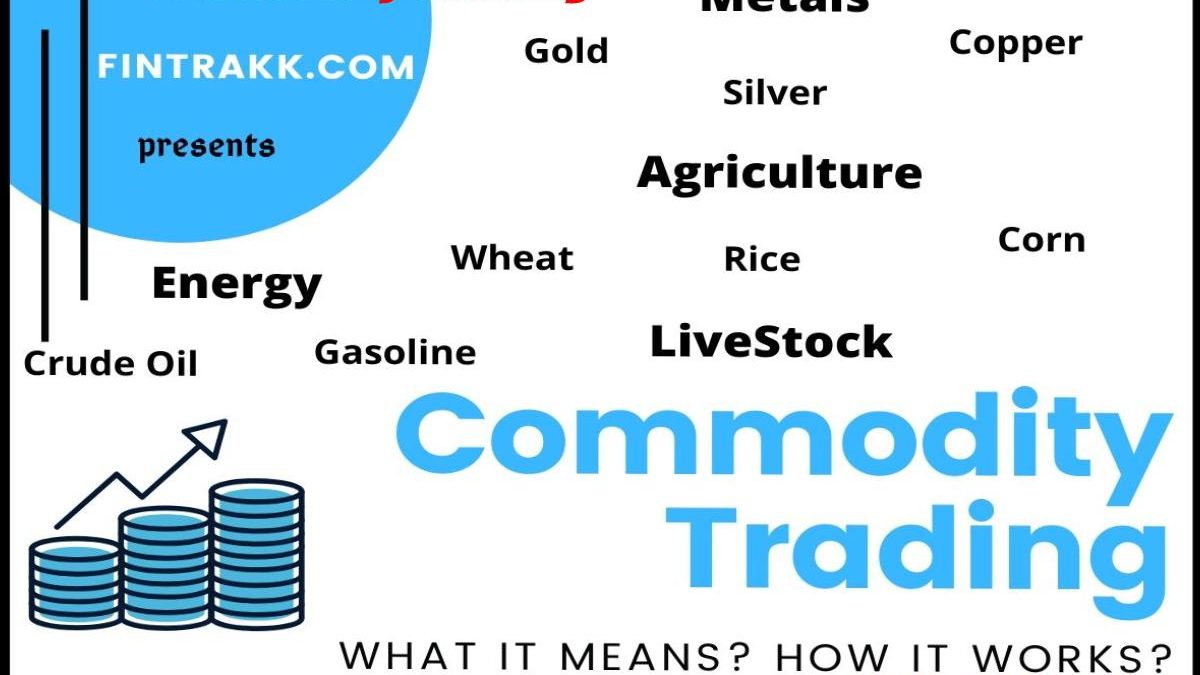Table of Contents
Commodities Remain an Important Aspect of Daily life for most Americans.
Commodity Trading, A commodity remains a basic good used in commerce that remains interchangeable with other goods of the same type. Traditional examples of merchandise include grain, gold, beef, oil, and natural gas. For investors, commodities can remain a meaningful way to diversify their portfolios beyond traditional stocks. In addition, because commodity prices tend to move in opposition to stores, some investors also rely on merchandise during periods of market volatility.
Also read: Earthbound Trading
In The Historical,
Commodity trading required significant amounts of time. As a result, money and experience remained limited primarily to professional traders. Today, there remain more options to participate in the commodity markets.
Key Findings
Commodities that remain traded fall into four broad categories: metal, energy, livestock and meat, and agriculture. For investors, commodities can remain a meaningful way to diversify their portfolios beyond traditional stocks. In the most basic sense, commodities are risky investment propositions because their market (supply and demand) is affected by uncertainties that are difficult or impossible to predict, such as unusual weather patterns, epidemics, and natural and artificial disasters. For the man. Practice trading with virtual money
Find out how much a hypothetical investment would be worth today.
A History of Commodity Trading
Commodity trading is an ancient profession with a more extended history than stock and bond trading. The rise of many empires may be directly related to their ability to create complex trading systems and facilitate the exchange of goods.
In Modern Times,
Commodities remain still traded around the world. A commodity exchange refers to a physical location where commodity trading occurs and the legal entities that have remained formed to enforce rules for selling standardized commodity contracts and related investment products.
Some commodity exchanges have merged or closed in recent years. Most businesses have a few different products, although some specialize in just one group. In the United States. There remains the Chicago Mercantile Exchange (CME), the New York Mercantile Exchange (NYMEX), and the Intercontinental Exchange (ICE) in Atlanta, Georgia. In Europe, there remains the London Metal Exchange (LME), as its name suggests. The London Metal Exchange only deals in metals.
Also read: Alchemist Trading Co
Special Features of the Commodity Market
In the broadest sense. The basic principles of supply and request drive commodity markets. Changes in supply impact demand; low supply equals higher prices. Therefore, any significant disruption in the collection of a product, such as a widespread health problem affecting livestock, can cause a generally stable and predictable increase in livestock requests.
Global economic growth and technological advances can also affect prices. For instance, the emergence of China and India as critical industrial players (demanding higher volumes of industrial metals) has contributed to the rest of the world’s decreased availability of metals, such as steel.
Types of Commodities
Traded goods generally fall into four categories: metal, energy, livestock and meat, and agriculture.
Rails
Commodities of metals include gold, silver, platinum, and copper. During market volatility or bear markets, some investors may decide to invest in precious metals, particularly gold, due to their status as a reliable metal with real transferable value. Investors may also invest in precious metals as a hedge against periods of high inflation or currency devaluation.
Energy products include crude oil, heating, natural gas, and gasoline. Historically, global economic developments and reduced oil production from established oil wells worldwide have led to rising pet prices.
Also read: Coinbase Pro Trading is Disabled

